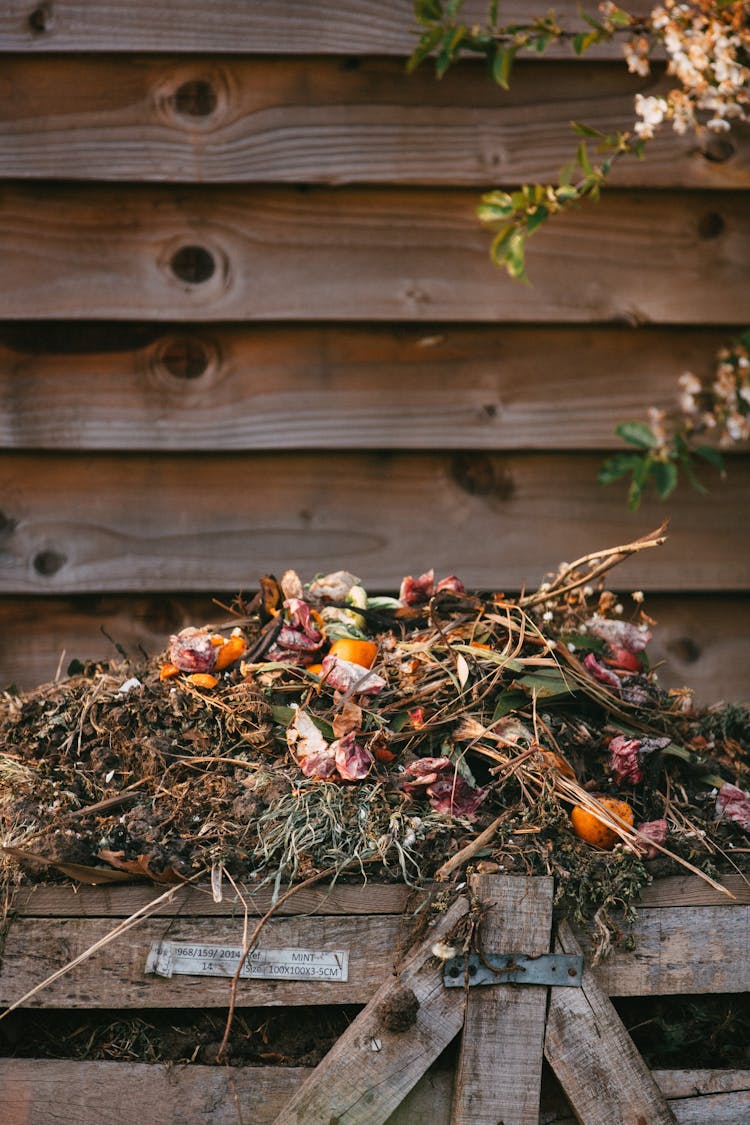A beginner’s guide to composting
Home composting is a great way to make excellent soil that can be used for any gardening or houseplant project. And as decomposition within landfills generates greenhouse gases, setting up a compost at home is an easy way to reduce your environmental footprint.
Here’s our advice for how to set up a compost – even if you don’t have much time or space to spare.

WHAT SHOULD YOU START YOUR COMPOST IN?
You have three options for where to make your compost – a pre-made container, your own structure, or an open heap.
You can find specially designed compost bins at garden centres or on the internet. Some local councils offer subsidised compost bins too. If you’re limited for space, you can even use a small bin or container.
You can make your own composter in a garden or an allotment – here’s a guide for how to build one using old pallets. Build it on well-drained soil, if you can.
If you have a larger garden, you may prefer to simply create an open heap in a quiet corner. It will decompose more slowly as it’s not enclosed, so it'll struggle to retain moisture and warmth.
WHERE IS A GOOD SPOT FOR YOUR COMPOST?
Position or start your compost in partial shade, like an area with tree foliage. The warmth from the sun will speed the composting process, but you don’t want to completely dry it out. Partial shade is also perfect for growing some of these shade loving vegetables.
The area you choose shouldn’t experience different temperatures or moisture extremes, as the bacteria and fungi that convert waste to compost work best in constant conditions. Make sure you have access to a water source nearby, too.
WHAT IF YOU DON’T HAVE MUCH SPACE?
You can start a compost even if you live in a small apartment. In theory, the only area you need for a composter is the size of a small bin.
If you don’t have access to a garden, consider vermicomposting (adding beneficial worms to your compost) or starting a tabletop composter. Make use of your balcony or patio, if you have one, or pick a shaded spot in your kitchen.
WHAT SHOULD GO INTO YOUR COMPOST?
Compost is generally made from a mix of both nitrogen-based (green) and carbon-based (brown) materials.
Green materials include:
- Fruit and vegetable scraps
- Eggshells
- Teabags
- Coffee grounds
- Fresh grass cuttings
- Old cut flowers
- Soft offcuts and weeds from gardening
Brown materials include:
- Dry dead leaves, branches, pine cones and needles
- Torn-up cardboard
- Newspaper and junk mail
- Paper bags
- Paper egg cartons
- Straw and hay
- Sawdust
- Untreated wood
- Wine corks
Add green and brown materials in either roughly even quantities or with slightly more brown matter.
HOW DO YOU GET YOUR COMPOST STARTED?
It’s not essential, but if you’d like, you can start your compost with a couple of layers, each a few inches deep:
- Gravel at the bottom of the composter, to aid with drainage
- Soil on top, to introduce beneficial microbes to the soil
Next, add a 6-inch layer of brown materials and 2 or 3 inches of green matter. Repeat the layering process as you accumulate more waste, but this time use equal quantities of both.
Get a large pitchfork, dig into your compost heap and turn it over every month to add air. A compacted, airtight compost takes longer to complete the composting process.
If your compost is very dry, spray it with water until it’s moist, but never soggy.
WHEN WILL THE COMPOST BE READY?
If your compost is decomposing at an optimum speed, it will start to heat up. If it doesn’t, that’s not necessarily a bad sign – the process may just happen at a slower rate.
After a couple of weeks, it will begin to cool down. Turn the heap again and add water if it’s drying out. Repeat this process every time it cools. You should get completed compost in around 2-4 months – but it may take up to a year, depending on what went into your bin and how well you maintained it.
HOW WILL YOU KNOW THE COMPOSTING PROCESS IS FINISHED?
When the compost has finished transforming, the pile will have a similar dark brown colour and crumbly consistency as good soil. It should have a pleasant, earthy smell, a bit like damp woodland.
There may be some remaining material in the compost that hasn’t decomposed completely. This can be removed and added to the next heap of compost material.

